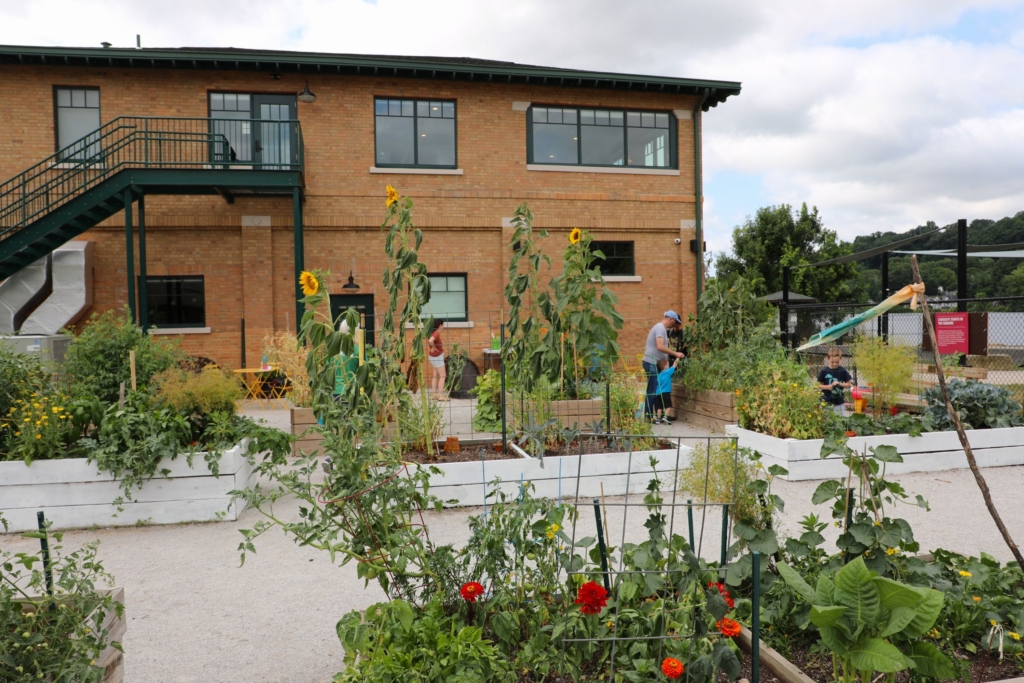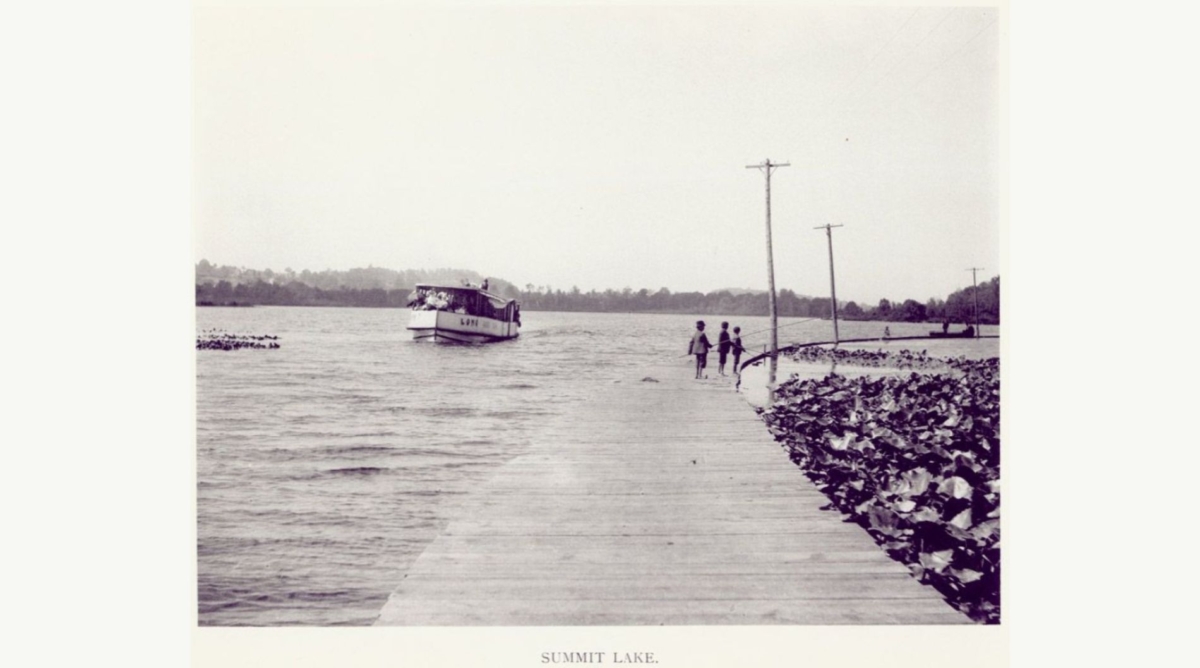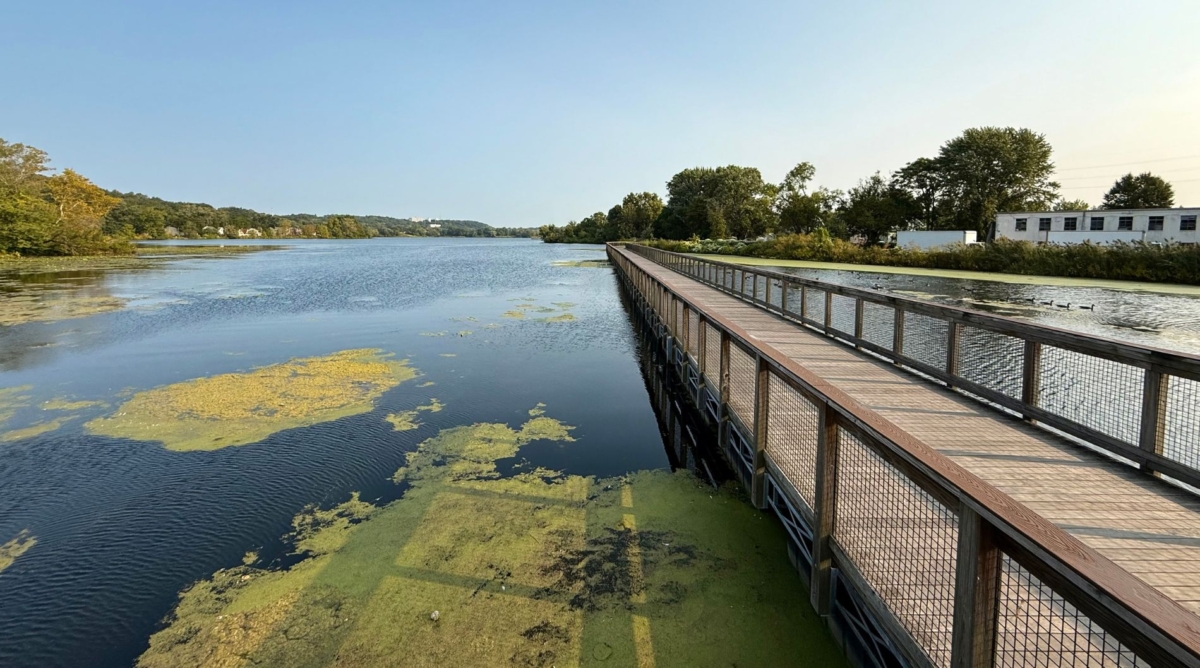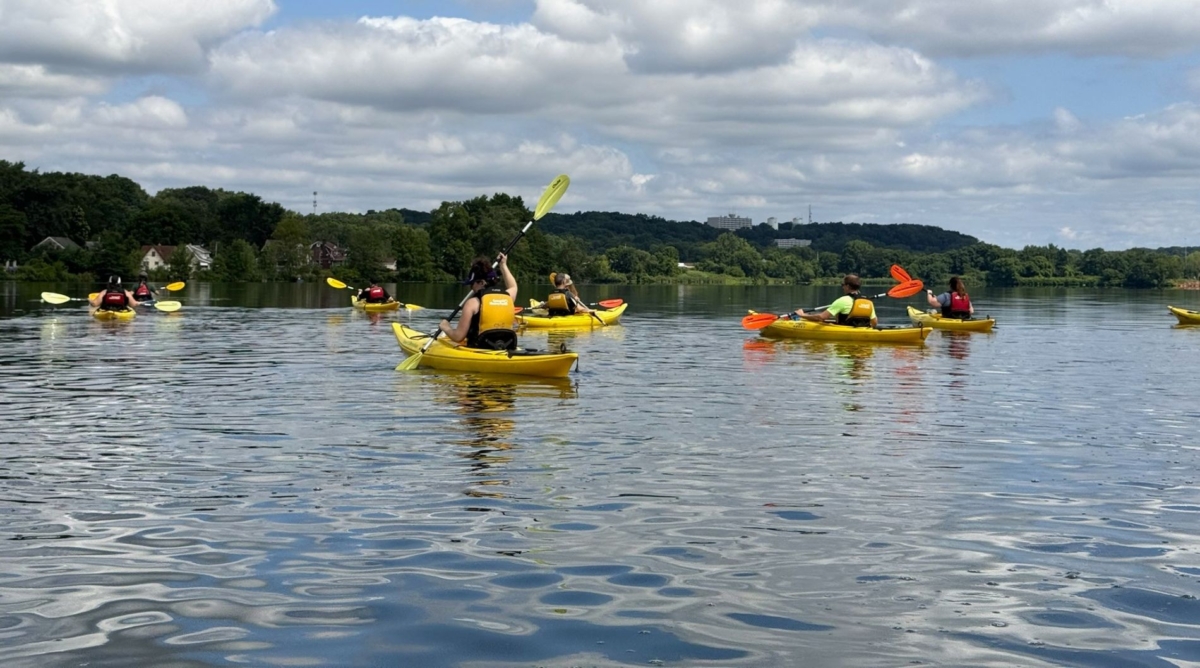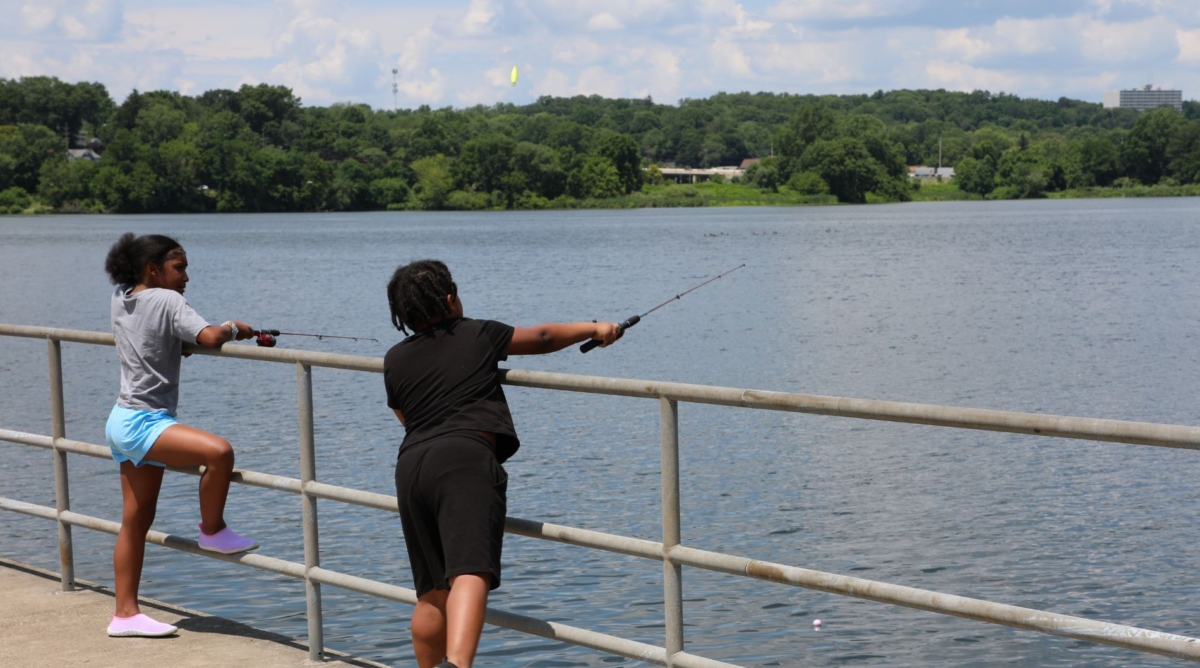Without Summit Lake, it’s no exaggeration to say Akron would not be the city we know today. This glacial lake, at the summit of two watersheds, is now home to bustling human and natural communities.
Before we get into what the area has to offer, let’s dive into the past to discover how we got here.
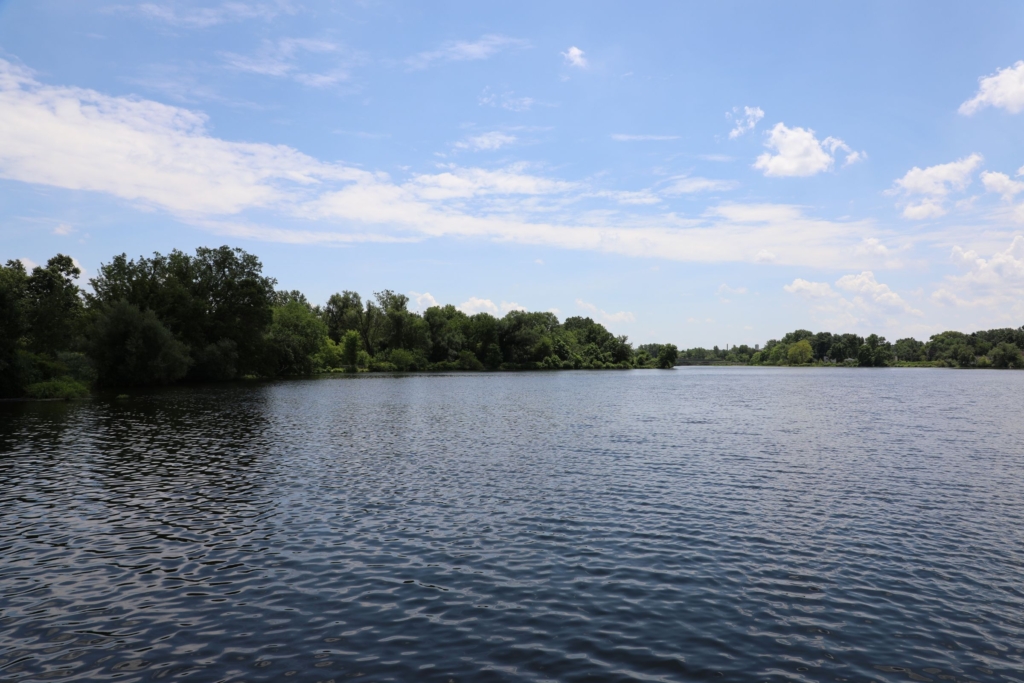
How did Summit Lake form?
Summit Lake is a kettle lake – it formed 13,000 years ago at the end of the ice age when melting glaciers created a natural basin. It’s located on a high point along the Continental Divide, so its water has the potential to flow north or south. Summit Lake would have been self-contained, but the canal cutting through it, along with the myriad reservoirs drawing from it, complicates the current flow. Most days it flows north to the Cuyahoga River instead of south to the Tuscarawas River.
If you’re from Northeast Ohio, you likely know the rich history of the canalway, which had an immense impact on the lake. But let’s explore who was here before all the oats and rubber.
Indigenous impact
Summit Lake has been an essential connection between north and south waterways since the pre-contact era. Thousands of years ago, Indigenous Peoples walked the Portage Path carrying the birch bark canoes they used to travel across the land. Since it was surrounded by dense wooded bogs, the lake wasn’t part of the direct path. However, due to its proximity, it’s believed that the lake was used as a landmark and a place to hunt, fish or gather food.
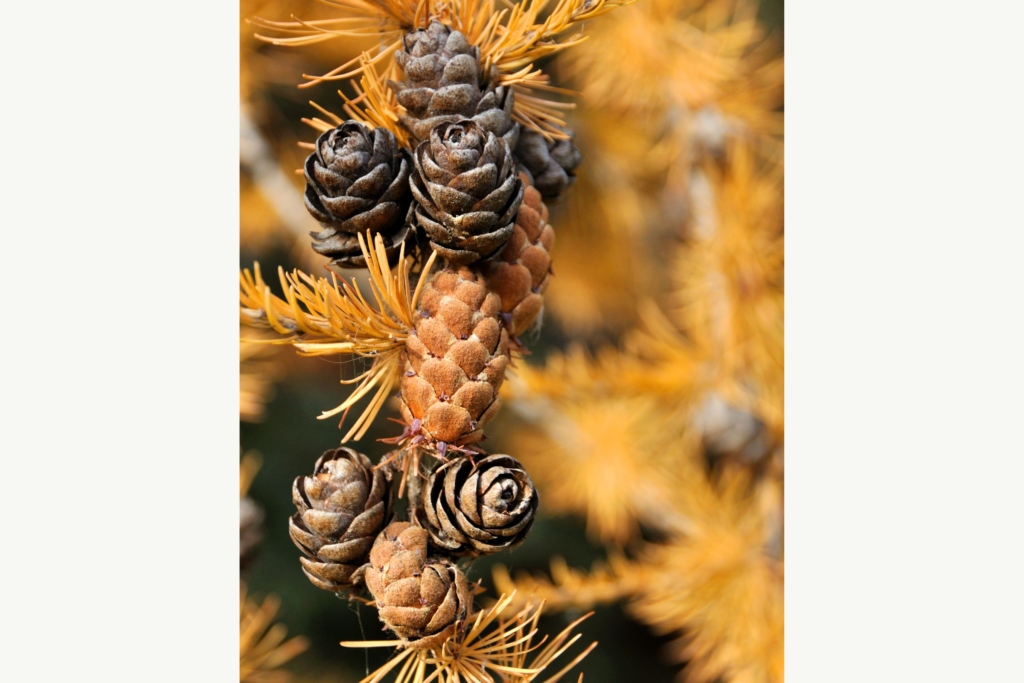
The mucky soil made it hard to traverse. Yet it allowed for a peat bog and forests of tamarack to grow. This swampy area was full of unique plants, including cranberries, which fed wildlife, signaling to travelers that they could find food. Plus, nearby rich soil informed them that the region itself had some quality areas for farming.
European and American colonists eventually forced Indigenous communities off their land. Soon after, Simon Perkins began to dream of profiting off a steady stream of revenue from merchants and travelers in a canal city.
Canal flows in people and money
In the late 1820s, Simon Perkins was a former general who donated land to create the city of Akron. He then helped create the canal in order to take advantage of its profitability. This manmade waterway connected the Cuyahoga and Tuscarawas Rivers, aiding in travel for business and pleasure.
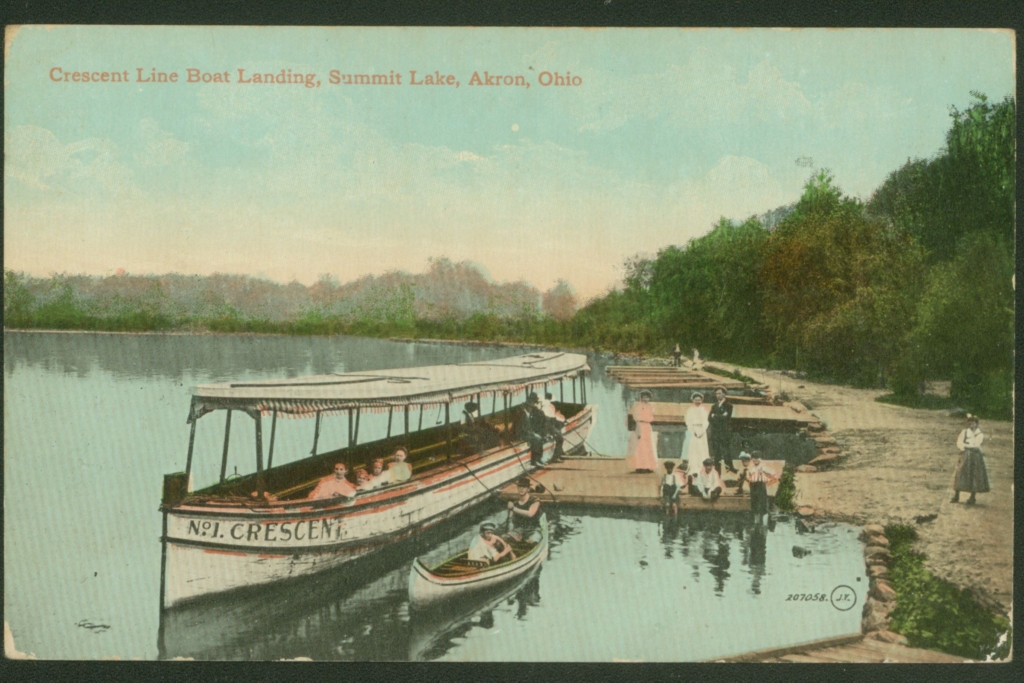
The economic impact of the canal affected the entire area. Cargo boats crept through the canal’s 24 locks. With minimal traffic, it would take 15 minutes for a boat to pass through one lock. And since traffic jams were common, crews had plenty of time to get off the boat and explore the city, looking for meals and entertainment. Passenger boats also traversed the canal, helping people explore more of the state and surrounding states.
But how does Summit Lake fit into this?
Summit Lake provided the water needed to fill the canal. And, as boats traversed from one river to the next, they crossed the lake. A floating path was built across the water so mules could pull the boats. A section of the Towpath Trail spans the lake today as an homage to this time.
Now that the canal allowed people to more easily travel and farmers to sell their items across the state instead of just growing food for their family, it attracted more and more families to settle in the area. The city grew from nearly 2,000 people in 1850 to over 42,000 by 1900 — which brings us to our next population boom, thanks to rubber.
Industrial impact
As the rubber industry exploded with the innovation of rubber tires and the advent of the automobile, the first three decades of the 1900s saw the city expand to a quarter of a million people. While The Goodyear Tire & Rubber Company and Firestone Tire & Rubber Factory developed their own neighborhoods for employees, other citizens sprawled throughout the city – including the neighborhood surrounding Summit Lake.
With the increase in population, people were looking for entertainment and recreation options. Summit Lake provided an ideal backdrop for a picnic park in the mid to late 1800s. Akron Street Railway & Herdic Company saw the opportunity to drum up business for their streetcar venture. They purchased land on the east side of the lake to build Lakeside Park, growing it from a picnic venue to a small amusement park with a Ferris wheel and carousel. They ran a horse-drawn streetcar line towards the park, helping to increase both park attendance and streetcar usage.
Their success brought competition in the form of other streetcar companies buying land to build amusement parks around Summit Lake. By 1917, Summit Beach Park was the most popular. Considered “Akron’s Coney Island,” it featured a variety of attractions, from a dance hall and roller skating rink to a casino and rollercoaster. However, the most popular ones were segregated, disallowing Black people from enjoying the fun too. Summit Beach Park survived the Great Depression and rationing of WWII and closed around 1960.
But life wasn’t all cotton candy and blue skies.
Pollution problems
The Firestone Tire and Rubber factory sat about one mile east of Summit Lake. In order to get water to use in the rubber manufacturing process and to cool their machinery, they built a pump house – which is now Summit Lake Nature Center. Four large pumps pulled 32,000 gallons of water a minute from the lake to the factory. The water was then pumped back into the lake, but this time carrying cadmium, zinc and other pollutants. By the 1920s, black sludge covered the lake’s surface.
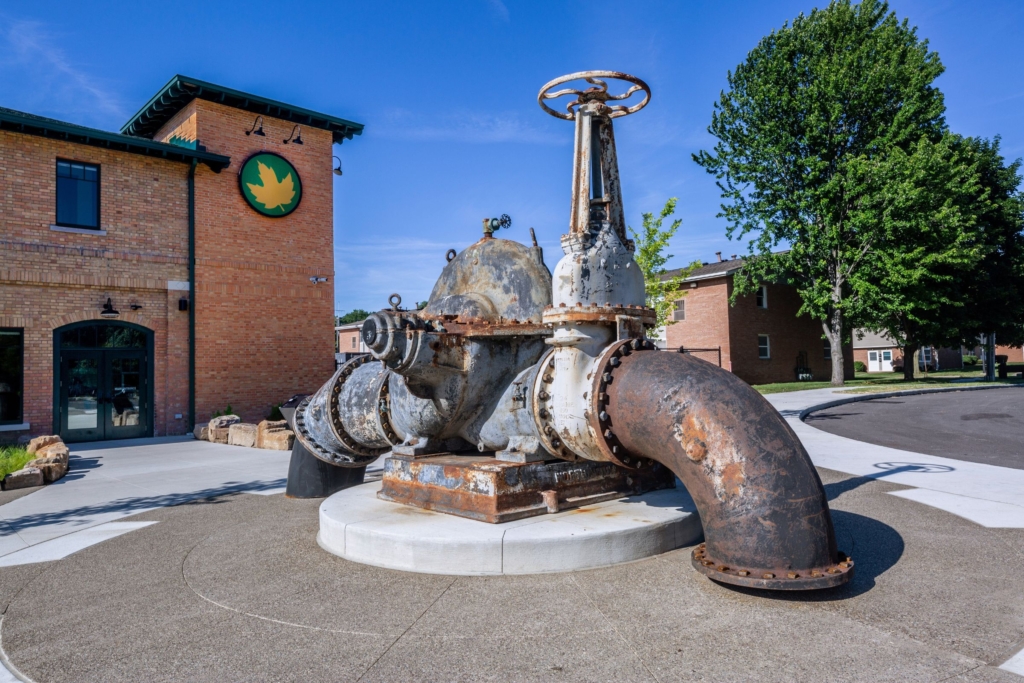
The lake struggled with pollution from other industries using canal water. Plus, pollution from the surrounding neighborhoods could easily make its way into the lake and become another lakeside attraction.
After decades of neglect, emphasized by the 1969 fire on the Cuyahoga River, water quality finally took a turn.
Learning from fast growth
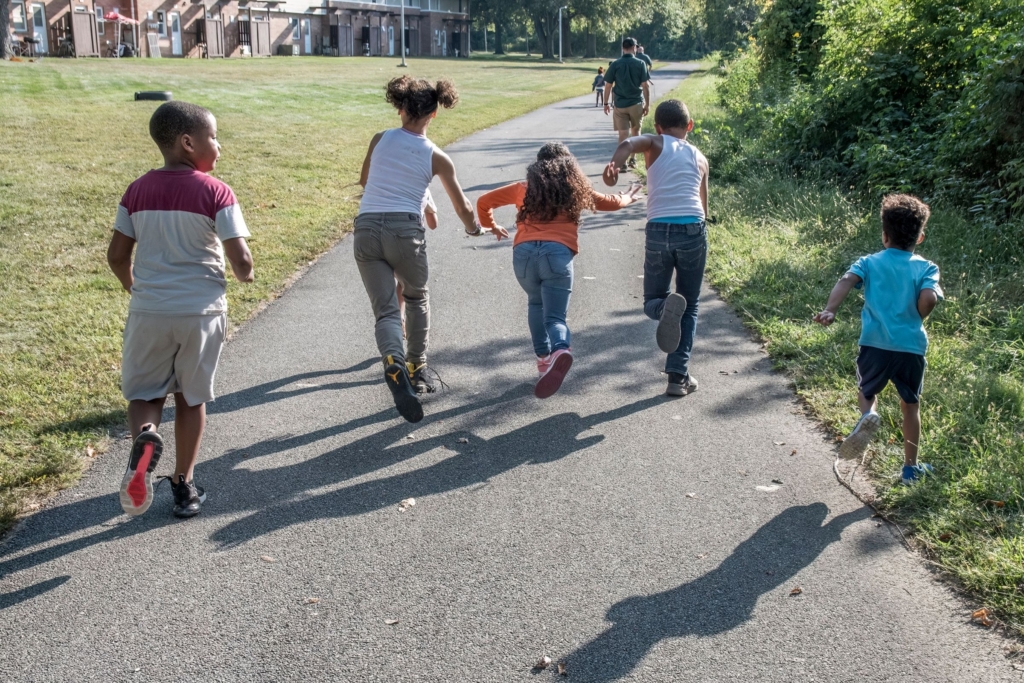
Summit Lake is much cleaner than it used be. The worst of the chemical pollution is now buried in the mud, although swimming is not recommended. Experts say it’s safe to come into contact with the water and eat fish from the lake (be sure to review the Ohio Department of Health’s Ohio Sport Fish Consumption Advisory for recommended intake).
Even with its buried past, Summit Lake is great for water recreation like kayaking, stand-up paddleboarding and fishing. The Towpath Trail runs right along it – and over it – so hikers, runners, bikers and more enjoy the rebirth of nature.
In fact, nature is our greatest signal of the water’s improved health. Summit Lake is a birding hotspot year-round. Watch for birds like cormorants, osprey and loons who eat mostly fish and require clean water.
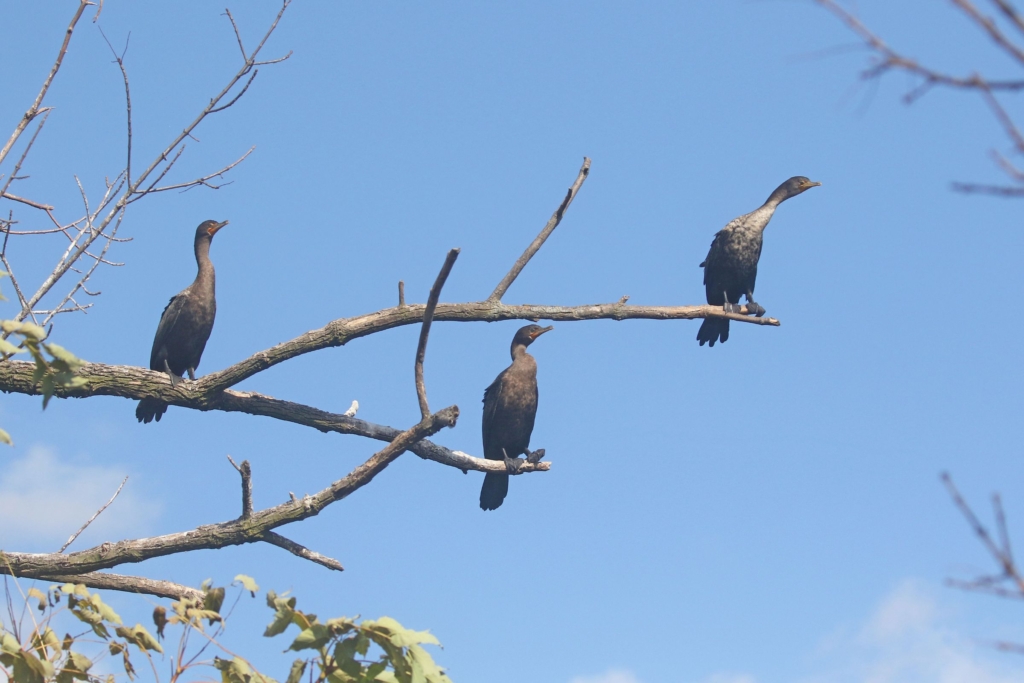
You won’t see floats of black sludge from rubber factories; however, you may see people from Riverkeepers Ohio and Ohio & Erie Canalway Coalition’s Canal Cleanups removing trash and litter that has made its way into the lake. Unfortunately, pollution is still an issue, but we can’t deny the miraculous recovery of the area compared to the 1900s.
Visit Summit Lake Nature Center
This is just a glimpse of the deep history of Summit Lake. Visit the area for yourself and stop into Summit Lake Nature Center to learn even more about the neighborhood’s past and explore current flora and fauna. You may be inspired to envision an even better future.
